SUMMARY
This is AI generated summarization, which may have errors. For context, always refer to the full article.
![[OPINION] Afghanistan, OFWs, and the modern slave trade](https://www.rappler.com/tachyon/2021/08/tl-ofw-afghanistan-sq.jpg)
Those following the news from Afghanistan in the last few days may be wondering why there are Filipino workers there when Filipinos have been officially banned from working there for reasons of physical security. Well, it’s because labor recruitment firms subcontracted by the US Defense Department took care of subverting our laws to bring them there. Pressure from these contractors was so great that our total ban on deployment of OFWs to Afghanistan was relaxed in 2014.
We don’t actually know how many Filipinos are now in Afghanistan. One Philippine diplomat claims there were about a thousand, adding that Pakistani officials jokingly told him that the Philippine Embassy should be relocated from Islamabad to Kabul. Others say there are thousands more since a great many arrived there without exit papers from the Philippines. All we can say is that since the vast majority of them worked for the US and other western governments that participated in the invasion of Afghanistan, they are not welcome there under the Taliban. Indeed, their lives might be in danger.
The great insecurity, both in terms of safety and economic survival, that our OFWs in Afghanistan face is one that they share with many OFWs in other parts of the world. This is especially the case with the 37% of them that the census classifies as being in “elementary occupations.” For people in this category, which includes domestic workers, the labor export industry is a system of repressed labor that is is often indistinguishable from classic slavery.
The dynamics of the current system of trade in repressed labor is illustrated in the case of the Philippines. This country is one of the great labor exporters of the world. Some 10% of its total population and about 22% of its working age population are now migrant workers in other countries – some on temporary contracts, some who have changed their status to that of resident or citizen of the receiving country, some without documents. Fixty-six percent of those working on contract in 2019 were women. With remittances totaling over $33.2 billion in 2020, the Philippines places fourth in the world as a recipient of remittances, after India, China, and Mexico.
Labor export and structural adjustment
The role of the Philippines as a labor exporter cannot be divorced from the dynamics of neoliberal capitalism. The labor export program began in the mid-1970s as a temporary program under the Marcos dictatorship, with a relatively small number of workers involved – about 50,000. The ballooning of the program to encompass nine million workers owes much to the devastation of the economy and jobs by the structural adjustment policies imposed by the World Bank and the International Monetary Fund beginning in 1980, trade liberalization under the World Trade Organization, and the prioritization of debt repayment by the post-Marcos governments in national economic policy since 1986.
Structural adjustment resulted in deindustrialization and the loss of a great many manufacturing jobs; trade liberalization pushed so many peasants out of agriculture, a great number directly to overseas employment; and prioritization of debt repayments robbed the government of resources for capital expenditures that could act as an engine of economic growth since some 20-40% of the budget went every year to servicing the debt.
Massive labor export has served another function: as a safety valve for the release of social pressures that would otherwise have been channeled into radical movements for political and social change internally. Those who migrate are often among the most intrepid, the most nimble, and the most perceptive people in the lower and middle classes, the kind of people who would make excellent cadres and members of progressive movements for change. Along with the crisis of socialization of children owing to the absence of the mother, this is one of the most damaging legacies of the massive labor migration in the Philippines: that it has allowed our elites to ignore overdue structural reforms.
Unfree labor: The case of the Middle East
Labor export is big business, having spawned a host of parasitic institutions that now have a vested interest in maintaining and expanding it. Labor export has two faces: a legal, government-controlled face and an illegal one where arbitrariness and lawlessness rule. But frankly, both are systems for the trafficking of labor. The transnational labor export network includes labor recruiters, government agencies and officials, labor smugglers, and big corporate service providers like the US multinational service provider Aramark. Labor trafficking is expanding to become just as big and profitable as sex trafficking and the drug trade.
The spread of free wage labor has often been associated with the expansion of capitalism. But what is currently occurring is the expansion and institutionalization of a system of unfree labor under contemporary neoliberal capitalism, a process not unlike the expansion of slave labor and repressed labor in the early phase of global capitalist expansion in the 16th century, elaborated in the work of sociologists like Immanuel Wallerstein.
This expansive system that creates, maintains, and expands unfree labor is best illustrated in the case of the Middle East. As Atiya Ahmad writes, “With the booming of the Gulf states’ petrodollar-driven economies from the early 1970s onwards, a vast and consolidated assemblage of government policies, social and political institutions, and public discourse developed to manage and police the region’s foreign resident population. Anchored by the kefala or sponsorship and guarantorship system, this assemblage both constructs and disciplines foreign residents into ‘temporary labor migrants.’”
This elite-promoted construction of migrant identity promotes an internalization of the the migrants’ role as social subordinates and an emasculation of their status as political agents. They are expected to remain and so far have largely behaved as non-participants in the politics of their so-called host societies, even as these societies are swept by the winds of political change.
In 2019, 51.4% of the more than two million Filipino workers that went abroad went to the Middle East. 22.4% went to Saudi Arabia, the No 1 country of destination. Most of these workers going to that country were women trafficked for household service or domestic work.
Here is how the labor trafficking system for household service workers operates in the states in the Arabian peninsula along the Persian Gulf. A recruiter from a Gulf state contacts his man in the Philippines. The Filipino contact goes to the remote provinces to recruit a young woman promising a wage of $400 a month, which is the minimum amount set by the Philippine government. When she departs, the recruitment agency gives her another contract at the airport, one that is often written in Arabic, saying she will be paid only half or less that amount. On arrival at the destination, she receives from the Gulf recruiter a temporary residence permit or iqama, but this is taken from her along with her passport by the recruiter or by her employer.
The migrant worker is then turned over to a family where she labors under slave-like conditions for 18 to 20 hours a day. She is isolated from other Filipino domestic workers, making her communication with the outside world dependent on her employer. She cannot leave the employer because her temporary residence certificate and passport are with him. If she runs away, however, and goes to the labor recruiter, she is “sold” to another family, sometimes at an even lower rate than that paid by the original employer.
Unable to leave the country since she has no documents, the runaway most often ends up being sold from one family to another by the labor recruiter. If she is lucky, she might find her way to the Philippine embassy, which operates a shelter for runaways, but it will take months if not years for the Philippine embassy to obtain the necessary permits to enable her to return home.
How regulation is subverted
That’s the legal system. Now to the illegal one.
Clandestine networks have developed to smuggle workers from the southern Philippines to destinations in the Middle East. A number of women domestic workers I interviewed in Damascus in 2012, when I participated in a rescue mission for OFWs caught in the crossfire of civil war, told of being smuggled out of the southern Philippine city of Zamboanga by small boat to the Malaysian state of Sabah. From there they were transported in the hold of a bigger boat going to Singapore, where they were then offloaded and brought by land transport to a site near Kuala Lumpur. In Kuala Lumpur they were forced to work for their subsistence for six weeks. Only after two months were they finally transported by plane from Kuala Lumpur to Dubai, then to Damascus where they found themselves being offloaded into a country in the throes of civil war.
With such illegal transnational human smuggling networks in operation, the Philippine embassy estimated that 90% of the 9,000 domestic workers in Syria were undocumented – that is, they had no valid exit papers from the Philippines. Among other things, this made locating and contacting them very difficult after Manila issued orders to the embassy to evacuate all Filipino workers from Syria.
Sexual abuse: The ever-present menace
The predominance of women among the workers being trafficked to the Middle East has created a situation rife with sexual abuse. In this system labor trafficking and sexual trafficking are increasingly intersecting. Here is an excerpt from a report of the House Committee on Overseas Workers of the Philippines following the visit of some of us to Saudi Arabia in January 2011:
“Rape is the ever-present specter that haunts Filipino domestic workers in Saudi Arabia.… Rape and sexual abuse is more frequent than the raw Embassy statistics reveal, probably coming to 15-20% of cases reported for domestics in distress. If one takes these indicators as roughly representative of unreported cases of abuse of domestic workers throughout the kingdom, then one cannot but come to the conclusion that rape and sexual abuse is common.”
One could go further and say that there is a strong element of sex trafficking in the trafficking of Filipino women into the Middle East given that many Gulf households expect that providing sex to the master of the household is part of the domestic worker’s tasks. This is not surprising since slavery was abolished in Saudi Arabia only in 1962 and in the United Arab Emirates in 1963. What results is an unbearable situation, not only because refusal often brings a beating but also because this brings her into conflict with the wife. In many instances, domestic workers are “lent” to relatives not only to have them clean up the latter’s homes but to serve as sexual playthings for male brothers or in-laws.
Our 2011 congressional report recommended banning future deployments of household workers to Saudi Arabia since that was tantamount to consigning them to domestic hell. Our call fell on deaf ears.
Slavery is said to be a thing of the past. However, the dynamics of global capitalism has reproduced a system of repressive labor globally that is serviced and maintained by legal and illegal labor trafficking. Female domestic workers are at the bottom of the migrant social hierarchy in places like the Middle East. Their conditions of work, which often include rape and sexual abuse, constitute a condition virtually indistinguishable from slavery. As was the case of traditional slavery in the 18thand 19th centuries, abolition of this system of repressed, unfree labor must be high on the agenda of the 21st century. – Rappler.com
Walden Bello served as the chairman of the Committee on Overseas Workers’ Affairs of the House of Representatives of the Philippines from 2010 to 2015.
Voices features opinions from readers of all backgrounds, persuasions, and ages; analyses from advocacy leaders and subject matter experts; and reflections and editorials from Rappler staff.
You may submit pieces for review to opinion@rappler.com.
Add a comment
How does this make you feel?
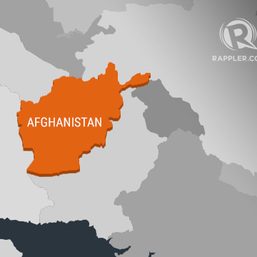
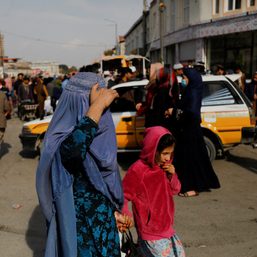
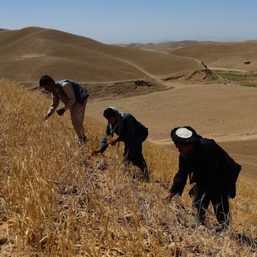
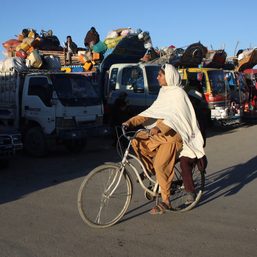
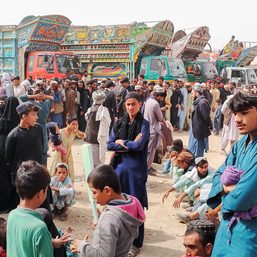
![[OPINION] In a changing climate, how do we ensure safety and health at work?](https://www.rappler.com/tachyon/2024/04/Climate-change-safety-workers-April-25-2024.jpg?resize=257%2C257&crop_strategy=attention)
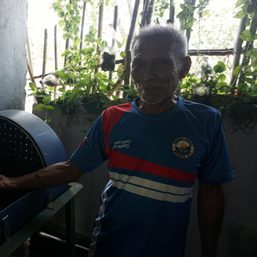
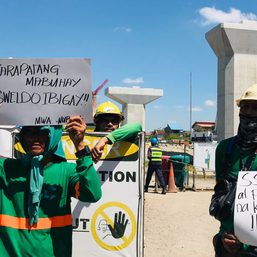

![[Episodes] Fairness to freelancers](https://www.rappler.com/tachyon/2024/02/Freelance-Writers-Guild-of-the-Philippines-rate-guide.jpg?resize=257%2C257&crop=217px%2C0px%2C720px%2C720px)

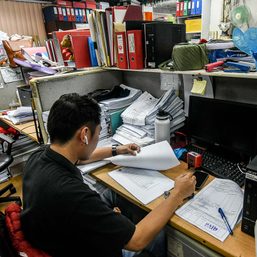
![[ANALYSIS] A new advocacy in race to financial literacy](https://www.rappler.com/tachyon/2024/04/advocacy-race-financial-literacy-April-19-2024.jpg?resize=257%2C257&crop_strategy=attention)

There are no comments yet. Add your comment to start the conversation.